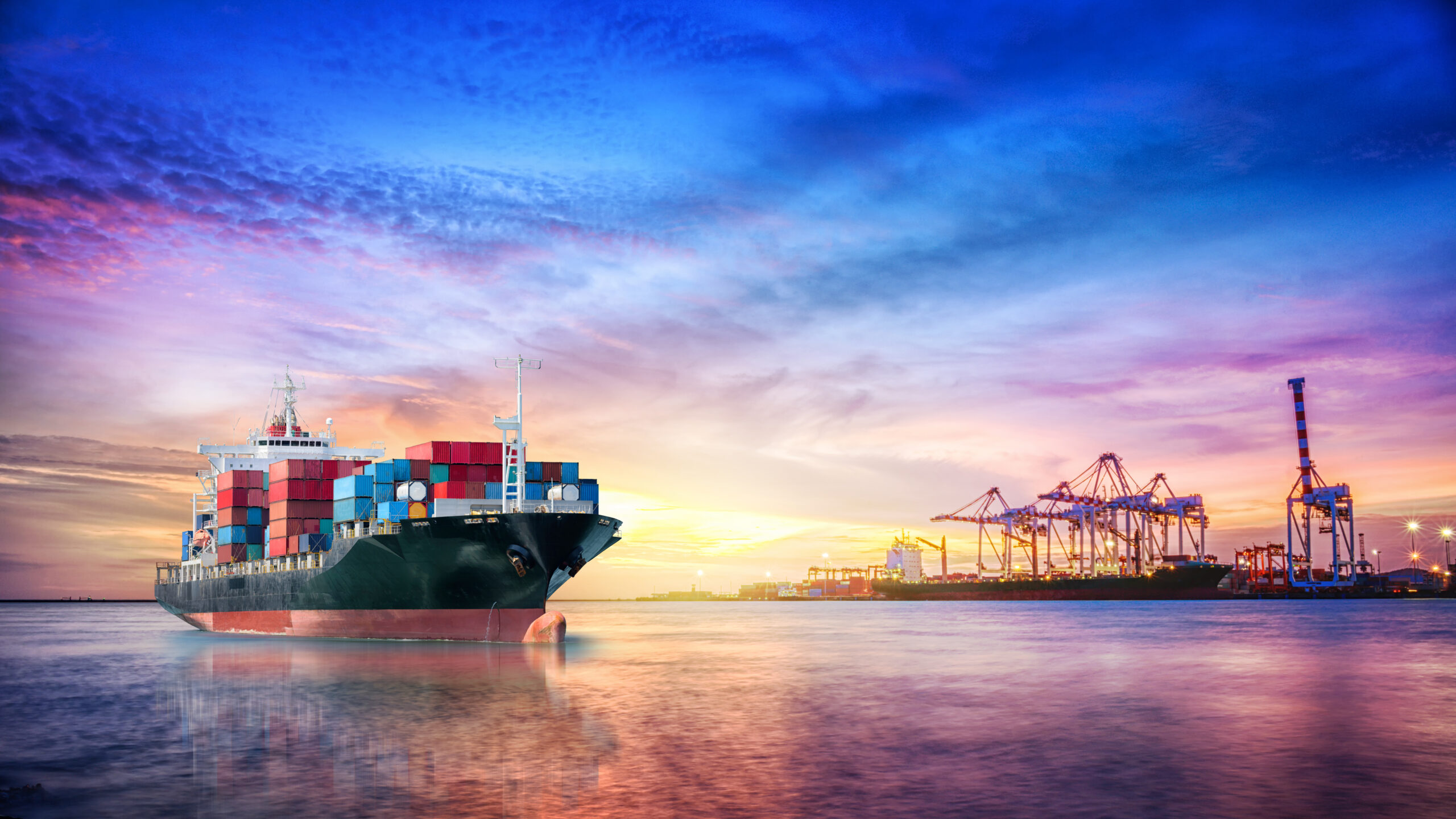
The shipping industry, a linchpin of world trade, is bracing for a turbulent chapter. How sharply Trump wields his tariff axe will determine whether the red flags herald a mere squall or a full-blown tempest
If you analyze any global marine traffic map today, you’ll be hit by the massive surge in traffic towards the ports of United States. The reason is clear – importers are stocking up as much as they can before the proposed tariffs disrupts global business. The global shipping industry, a barometer of economic health, is flashing warning of impending disruption as the specter of a global tariff war triggered by US administration’s tit-for-tat actions looms large. For a sector still grappling with overcapacity and softening freight rates, the early tremors of this anticipated turmoil are already reverberating across balance sheets and boardrooms.
In February 2025, the Office of the US Trade Representative unveiled a detailed proposal targeting Chinese maritime dominance through a sophisticated fee structure for port calls. This proposal would impose fees of up to $1.5 million per US port visit for vessels built in China – a significant development considering Chinese shipyards account for more than half of the world’s cargo ships, tankers, and ocean vessels. The fee structure employs a graduated approach based on fleet composition: shipping companies with 50% or more Chinese-built vessels would pay $1 million per visit, those with 26-49% would face $750,000 fees, while companies with 0-25% would still incur $500,000 charges.
An analysis of financial results, industry news, and freight rate data reveals a complex picture. While the strong financial performance of many shipping companies in 2024 suggests a period of high demand and profitability, several factors point towards potential vulnerabilities that could lead to a global supply chain disruption. The forecasted overcapacity in the shipping industry for 2025 – where capacity growth is expected to significantly outpace demand growth – creates a scenario where the market could become more sensitive to any demand shocks or supply-side disruptions. This oversupply could initially lead to lower freight rates; but if a sudden surge in demand occurs or if significant capacity is taken offline due to disruptions, it could trigger a rapid increase in rates and potential shortages.
Historical Precedent and Projected Consequences
The shipping industry has navigated Trump-era trade policies before, providing valuable precedent for analyzing potential impacts. Data from ocean freight intelligence platform Xeneta reveals that when Trump intensified tariffs on Chinese imports during the 2018 trade war, ocean container shipping markets experienced a dramatic 70% spike. This historical pattern directly contradicts Trump’s debate assertion that his proposed import tariffs would not increase consumer prices. “When ocean container shipping markets increase, that cost gets passed down the line and ultimately it is the end-consumer who pays the price,” notes Peter Sand, Xeneta’s chief analyst, highlighting the inevitable downstream effects. These could manifest as higher shelf prices or reduced product availability for consumers.
- The Mediterranean Shipping Company (MSC), the world’s largest container carrier, finds itself at the sharp end of this uncertainty. A proposed US port fee targeting Chinese-built vessels – 24% of MSC’s current fleet and 92% of its order book – could levy up to $1.5 million per ship, according to Reuters. Soren Toft, MSC’s chief executive, has voiced unease over the measure, which risks forcing the company to bypass smaller American ports or reroute entirely. With US imports accounting for a fifth of trade arriving on Chinese-made ships last year, per VesselBot data, any contraction in volumes could erode MSC’s hard-won profitability, a stark red flag for investors watching the transpacific artery.
- A.P. Moller-Maersk, the Danish titan, is equally exposed. Its chief executive warned on CNBC this month that Trump’s tariff proposals would “clearly” stoke inflation, driving up shipping costs while potentially choking demand. Maersk’s outlook for 2025 is already dour, with Bloomberg Intelligence forecasting a $1 billion cash burn – a far cry from its $27 billion free cash flow peak in 2022. The stalling decline of spot freight rates in late 2024 hints at importers rushing shipments ahead of tariff deadlines, yet analysts fear a longer-term softening if trade barriers solidify. Overcapacity, with 18% of the global fleet on order, only amplifies the peril.
- China’s COSCO, a state-backed behemoth, faces a uniquely precarious position. The US Trade Representative’s February proposal of $1 million port fees per vessel has sent shockwaves through its operations, threatening to slash port calls and inflate costs. The South China Morning Post dubbed Trump “a nightmare” for Chinese lines, a sentiment underscored by his administration’s past penchant for targeting Beijing’s economic reach. COSCO’s reliance on US-Asia trade lanes makes it a lightning rod for retaliatory measures, with ripple effects likely to unsettle global schedules.
- Smaller players are not immune. Germany’s Hapag-Lloyd, battling weaker demand and rising costs, warned clients late last year that EU emissions surcharges would double in 2025, per The Loadstar. A Trump-induced slump in US exports could squeeze its margins further. France’s CMA CGM, though less tethered to Chinese-built ships, contends with chaotic operations from Red Sea rerouting and fragile alliances. These pressures, already straining capacity utilization, signal a sector on edge.
Yet, amidst the gathering storm, shipping lines are not standing still. MSC is expanding its fleet and tweaking port networks for flexibility, while Maersk pivots to logistics and decarbonization to offset volatility. COSCO eyes Asia-Europe and intra-Asia routes as potential lifelines, bolstered by China’s Belt and Road infrastructure, and Hapag-Lloyd explores Arctic options via Russia’s Northern Sea Route. New alliances, such as the Premier Alliance launching in February, aim to pool resources and stabilize schedules, a pragmatic hedge against the chaos Trump’s policies might unleash. The economic signals are unmistakable. The Drewry World Container Index, at $2,629 per 40-foot container this month, reflects a 75% plunge from pandemic highs, leaving little cushion for further decline. Social media chatter on X from late 2024 captured importers stockpiling ahead of tariff threats, a short-term boon that masks deeper vulnerabilities. For global businesses and investors, the message is clear: the shipping industry, a linchpin of world trade, is bracing for a turbulent chapter. How sharply Trump wields his tariff axe will determine whether these red flags herald a mere squall or a full-blown tempest.
Stay connected with us to explore endless opportunities at Praxis Business School!
Visit our website at https://praxis.ac.in/ to learn more about our programs, admissions, and campus life. For any queries, feel free to reach out to us at https://praxis.ac.in/contact-us.
Follow us for the latest updates, insights, and success stories.
We look forward to connecting with you!


